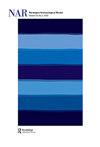反映过去:在伯利兹Say Kah重建古代玛雅空间
IF 1.1
3区 历史学
0 ARCHAEOLOGY
引用次数: 0
摘要
本文探讨了利用对古玛雅考古遗址文物和空间的特定文化理解进行识别和分析的可能性。在我们提出的案例研究中,我们使用源自象形文字的经典玛雅材料类别来重新设想我们对人工制品分布的表示和伴随的解释。我们从反映射中获得灵感,这种方法可以识别空间表示的位置性,并为多个/替代的空间视角腾出空间。我们根据我们在伯利兹Say Kah的经典玛雅考古遗址的工作进行了空间分析,将多个季节的挖掘结果可视化的现代模式与可视化并置,相反,可视化利用了古代居民对遗址、空间、,和用法(基于从经典Maya文本“属性限定符”中提取的信息)。我们认为,即使是不完整的信息,比如考古背景下的信息,也能让我们重新想象过去的空间视角和经验。此外,这样做代表着一种包容性的转变,它改变了我们对古代经验和用法的理解。其结果是,对遗址空间的视角发生了转变,偏离了现代考古视野,同时对我们用来构建解释的过程产生了更具反射性的意识。我们以更大的思考结束,这些思考对好奇将这些想法转化为其他文化背景的考古学家来说是有用的。本文章由计算机程序翻译,如有差异,请以英文原文为准。
Countermapping the Past: Reenvisioning Ancient Maya Spaces at Say Kah, Belize
This paper explores possibilities for recognizing and analytically using culturally-specific understandings of artefacts and spaces at an ancient Maya archaeological site. In the case study that we present, we use Classic Maya material categories – derived from hieroglyphic texts – to re-envision our representations of artefactual distributions and accompanying interpretations. We take inspiration from countermapping as an approach that recognizes the positionality of spatial representations and makes space for multiple/alternative spatial perspectives. We present spatial analyses based on our work at the Classic Maya archaeological site of Say Kah, Belize, juxtaposing modern modes of visualizing the results of multiple seasons of excavations with visualizations that instead draw upon reconstructed elements of ancient inhabitants’ perspectives on the site, its spaces, and usages (based on information drawn from Classic Maya textual ‘property qualifiers’). We argue that even incomplete information, such as that available for archaeological contexts, allows us to reimagine past spatial perspectives and experiences. Furthermore, doing so represents a move towards inclusion that changes our understanding of sites in terms of ancient experience and usage. The outcome is a shifted perspective on the spaces of the site that decentres the modern, archaeological vision, accompanied by a more reflexive awareness of the processes we use to construct our interpretations. We end with larger reflections useful for archaeologists curious about translating these ideas to other cultural settings.
求助全文
通过发布文献求助,成功后即可免费获取论文全文。
去求助
来源期刊

Norwegian Archaeological Review
ARCHAEOLOGY-
CiteScore
2.10
自引率
0.00%
发文量
13
期刊介绍:
Norwegian Archaeological Review published since 1968, aims to be an interface between archaeological research in the Nordic countries and global archaeological trends, a meeting ground for current discussion of theoretical and methodical problems on an international scientific level. The main focus is on the European area, but discussions based upon results from other parts of the world are also welcomed. The comments of specialists, along with the author"s reply, are given as an addendum to selected articles. The Journal is also receptive to uninvited opinions and comments on a wider scope of archaeological themes, e.g. articles in Norwegian Archaeological Review or other journals, monographies, conferences.
 求助内容:
求助内容: 应助结果提醒方式:
应助结果提醒方式:


